The Svbony SV305C Camera (IMX 662 sensor) HCG Mode Jupiter and More DSO Examples
Hello again fellow astronomers. I finally got to see Jupiter for the very first time this year with my new Svbony SV305C Camera I just purchased using my Celestron 102mm Astrofi Mak telescope! The smoke from fires is finally clearing up here. I live in a city with major light pollution in the bortle 7/8but still with the smoke going away seeing is definitely getting a bit better. I have taken out the new Svbony SV305C camera a few more times now since my initial first light testing with a few DSOs and have done some more imaging of Saturn. There is some good and not so good with this camera. Since the SV305C is a new camera from Svbony with a new Sony sensor there is of course a newly developed camera driver for it which has some issues. The new camera driver definitely has a few small issues Svbony needs to work out. For example, the camera driver from time to time especially when changing resolutions will sometimes hang while capturing frames. This happened a few times in both Sharpcap and Astrodmx capturing software during several of my 2 hour sessions a bit frustrating. I have sent these issues to the Svbony technical team and hope these issues will get resolved soon. These types of issues are somewhat normal for most new cameras as they rush to get them on the market quickly so I am not too worried as the issue does not occur very often maybe a few times at most during in the imaging sessions. I also noticed the camera capture rate seems to top out around 53fps well before the lowest ROI mode is even reached while planetary imaging and I wish for sure with planetary imaging it was faster. Under normal camera imaging with most planetary cameras the framerate usually would keep speeding up and up to the lowest ROI resolution is reached. I am not sure why this is happening and seems be hit a wall well before the lowest resolution is reached. This could be another driver issue or possibly a hardware limitation with the camera itself. I am hoping to get a answer to this question from Svbony why this is so. So far no answers.
In this current blog I am going to show some cool new captures of the planet Jupiter, some nice Deep Sky captures recently taken and of course more captures of the planet Saturn (from the 2 sessions I have been outside). The deep sky examples captures taken from the new SV305C camera are using short capture durations again with two sets of of integration captures (16 captures each around 6 min total time at a 50 percent stack) with relatively high camera gain (70 percent at 353 gain) to test the new HGC noise reduction mode the new Sony sensors use and the camera increased camera sensitivity. I also performed some deep sky imaging with a bit longer integration time (65 shoots each around 25min total integration time at 50 percent stack) and I also have dropped the gain down a bit lower (to 302 gain). This was done to test the improved dynamic range in the images and see if there is any actual improvement. In theory, when the HCG noise reduction mode is activated the noise floor will drop significantly and most of the dynamic range in the image will be retained which should yield much better color range and better image detail (true in both planetary and DSO capture modes). Imaging below with the HCG noise reduction mode (before HCG kicks in around 252 gain) should of course yield significantly more noise. This was also tested. for reference and I captured a DSO below the 252 gain mark (before HCG kicks in) at the highest noise point for this Sony sensor and included a example. Yes the noise is definitely quite evident (see below capture). The remaining deep sky images were captured above the 252 gain mark at 302 and 353 when HCG noise reduction has definitely kicked in. Check it out in the below captures what a difference! I would definitely recommend you always using the SV305C camera above the 252 gain point in order to get the most clean and noise free images possibly while retaining high gain.
| M3 in Non-HCG Mode (at 203 gain and 12 seconds) see all those red and blue dots |
Jupiter and Saturn with the Svbony SV305C (seeing conditions 6 out 10 in Bortle 8 sky)
The images of Jupiter shown below were captured on two seperate evenings in ok seeing conditions but not great seeing conditions here in western Canada due to forest fires and smoke haze and is just starting to finally clear out. Total capture frames for Jupiter were around 500 to 1000 frames each using RAW 8 format at a framerate between 25 fps and 53 fps (max fps in any ROI mode it seems). I adjusted the gain accordingly in order to keep Jupiter below the 30ms mark to avoid atmospheric distortion and planetary rotation artifacts. When I captured Jupiter the planet was low on the horizon between my neigh boor's houses . I have included some interesting processing example images that show how these images were edited.
1. Scope Setup used for planetary: Celestron 102mm Mak (FL 1250mm) on Celestron Astrofi Goto Mount. Scope was covered with home made glare shield to avoid light glare during acutal imaging.
2. Jupiter and Saturn:
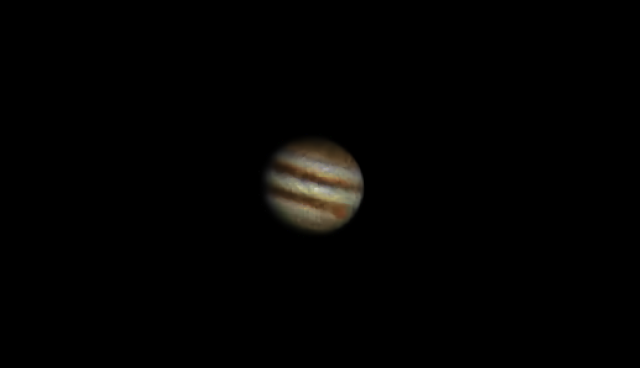 |
| Figure 3b: Jupiter (alt of horizon 20 degress) |
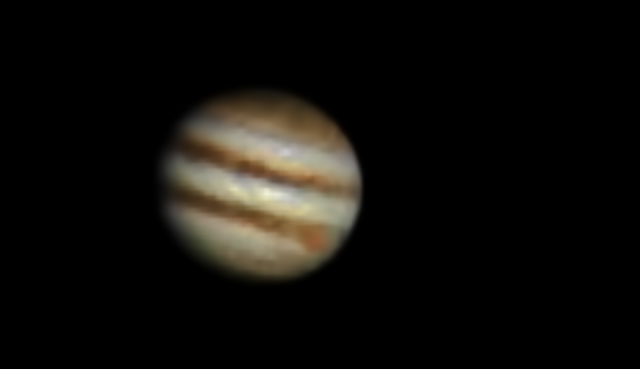 |
| Figure 3c: Enlarged Jupiter with great red spot captured (alt of horizon 20 degress) |
3. Saturn:
 |
| Figure 4: Saturn captured (alt of horizon 30 degress) |
 |
| Figure 5: Saturn supersized1 |
 |
| Figure 5: Saturn supersized2 |
What do you think of these captures? You be the judge of some of the sample captures of Jupiter and Saturn? Keep in mind these images were captured low on the horizon and under average conditions at best and with lots of light pollution.
DSO Imaging with the Svbony SV305C
1. Scope Setup used for deep sky imaging: Orion 80mm Goscope (FL 350mm) on Celestron Astrofi goto mount. Scope was covered with home made glare shield to avoid light glare during acutal imaging.
2. Some more deep sky targets were captured in high gain HCG mode (all at gain 352 at 24 second shots based on 15 shoots each 50 percent stacked):
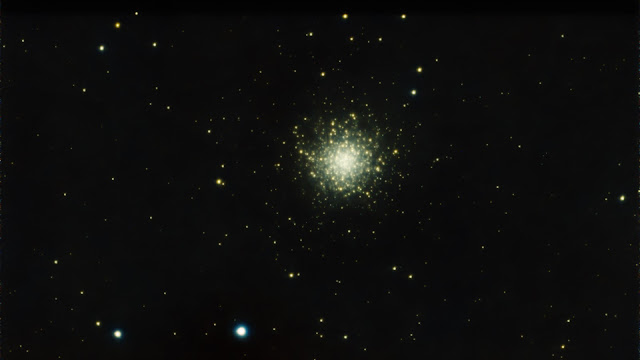 |
| M13 Hercules |
 |
| M13 Hercules Enlarged |
 |
| M57 Ring Nebula |
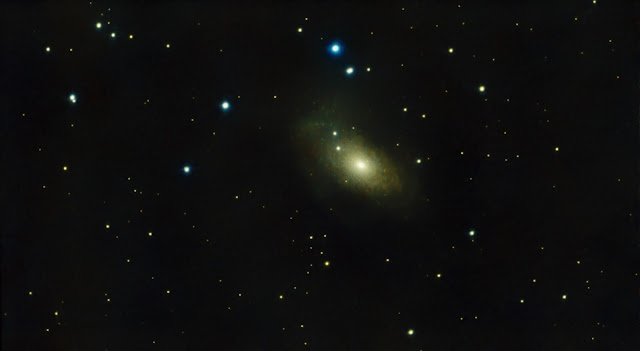 |
| M81 Bodes Galaxy |
 |
| M82 Cigar galaxy |
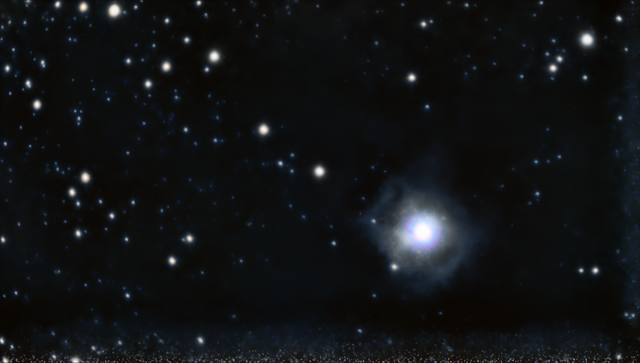 |
| NGC7032 Iris Nebula |
3. Some slightly longer integration deep sky targets (on my second session) were captured at medium gain in the HCG mode (gain 302 at 24 second shots based on 55 shoots each 50% stacked):
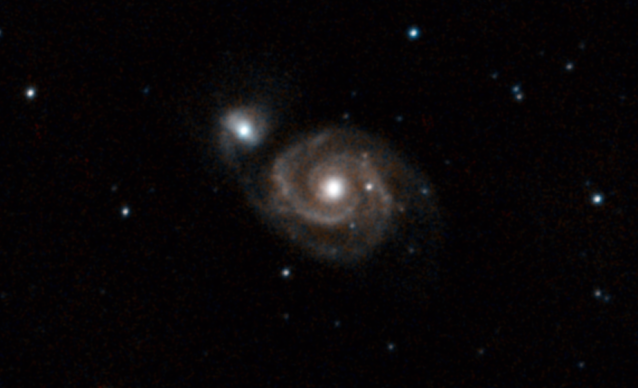 |
| M51 Whirpool Galaxy |
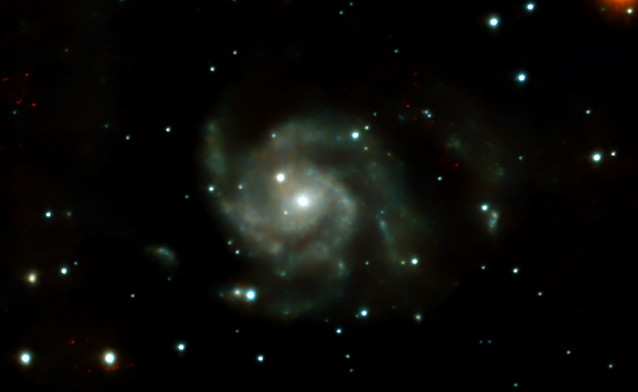 |
| M101 Galaxy with supernova seen on bottom left of outer side (big blue dot) |
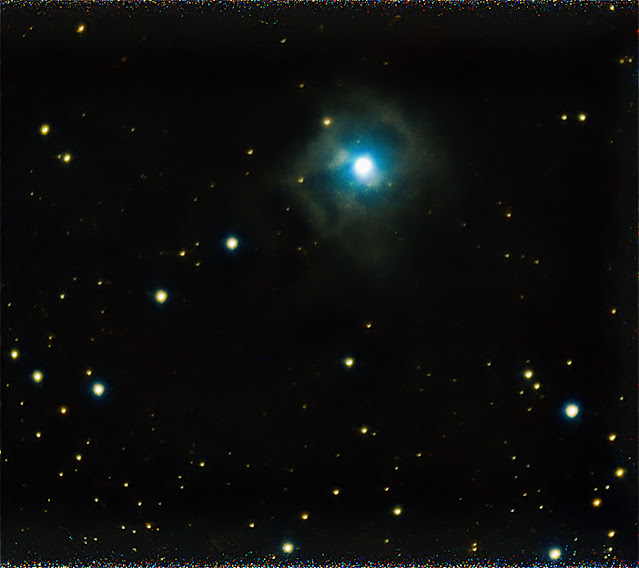 |
| NGC7023: Iris Nebula |
For both planetary and DSO imaging captures shown above the free Astrosurface processing software was used to stack the captured raw 16 bit image targets (stacking using the rotation option) and 8 bit planetary video for planetary stacking. Free Siril software was then used to do the some deep sky object color calibration, background extraction (getting rid of light pollution and bad light gradients caused by the pollution and lights etc) and to actually process all the DSO final images you see above. Free Registax software was used for planetary sharpening and some planetary color balancing. I also used Astra image software and the free Wavesharp program to enhance and enlarge some of the final planetary images you see above from the acutally original small stacked ones.
Conclusions
So a bit of good and not so good to be found with the new Svbony SV305C camera. The good part this camera does both decent planetary and some decent DSO imaging without being dedicated camera to either. This is what is cool about this new hybrid camera from Svbony it does both and does a great job of reducing noise and improving detail! The longer you integrate (take more captures) the more detail you will get in your planetary and deep sky images. I think the captures are pretty good considering the small number of shoots taken and the sky conditions at the time when they were taken. This camera seems very sensitive with good color and detail it can capture. The other good thing this camera is relatively cheap compared to other cameras of this type by other competitors. The bad part the frame rate for planetary is a bit on the low side (53fps tops) and this could cause issues and articles while imaging planets low on the horizon, bad seeing conditions and rotating rapidly like Jupiter for example. Under ideal or better conditions you can still however get pretty decent captures of the planets. So you decide.
Updates as of Sept 8th: Since the original article above I have used this camera several times and images are getting better and better of Jupiter and Saturn as they get higher and higher in the sky:
Saturn on Sept 2nd:
and Jupiter on Sept 2nd:
If you want to view more specs on this camera from the manufacturer or possibly purchase it you can find the camera link here: https://www.svbony.com/sv305c-planetary-camera
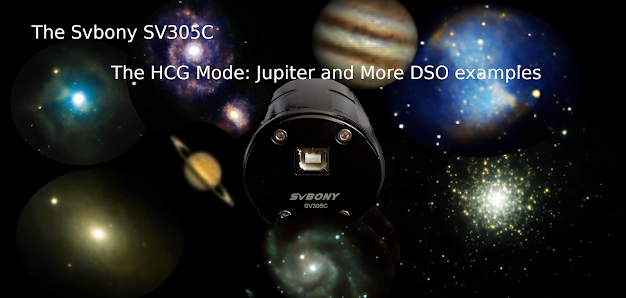

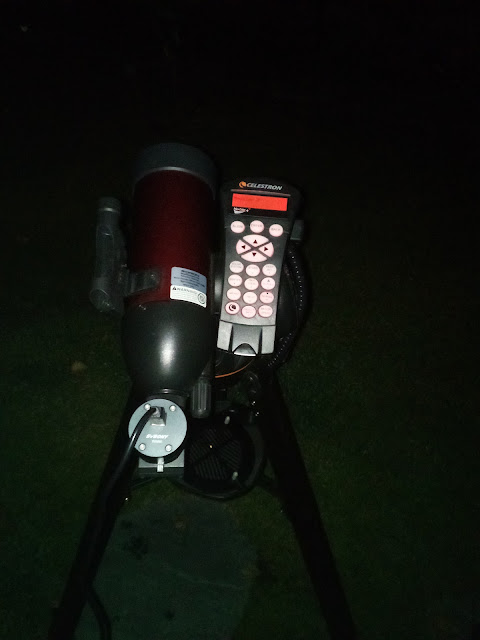




.png)